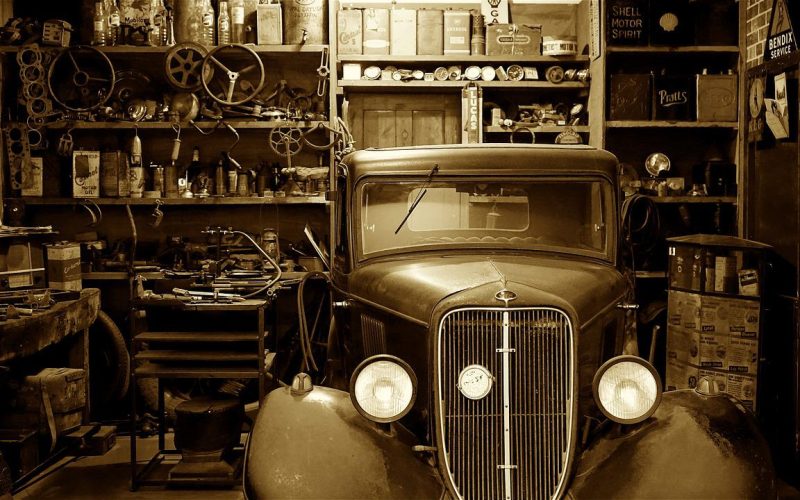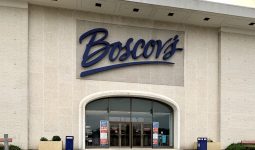Are you looking for the perfect wall for your garage? Have you been having trouble with ‘wet-walls’ construction and maintenance? Perhaps you want to know more about drywall.
This article will focus on modern alternatives to drywall for garages and discuss their unique characteristics.
Before discussing drywall alternatives for garages, it is essential to know that drywall has several qualities that make it great for buildings in general.
Some of them are:
- Drywall is highly resistant to fire, which helps control and prevent fire from spreading to adjacent rooms.
- Drywall can be functional immediately after installation, unlike plaster and mortar.
However, drywall does not offer some important things a garage wall should have. They include the following:
- The drywall is not soundproof, which can disturb others while you are doing noisy work in your garage.
- Drywall has low resistance to impact. Hence, it is prone to damage caused by physical force.
- Drywall can only be used in garages with little or no moisture. When it gets wet repeatedly, drywall swells and becomes damaged.
With all of the factors mentioned above in mind, it is clear that drywall is not entirely perfect for the garage. Therefore, some of the drywall alternatives for garages are:
1. Plywood
It is made from thin layers (plies) of wood glued together.
Plywood is produced in different thicknesses, smoothness, etc. Indeed, there is a wide variety of plywood.
So, how do you know the types of plywood that can be used as drywall alternatives for garages?
According to www.garageage.com, “the exact answer is 3/8-inch, and it is the minimum plywood thickness.” The international residential code also specifies “3/8-inch plywood for sheathing walls….” Therefore, it can be concluded that 3/8-inch plywood is appropriate in terms of thickness when using plywood as a drywall alternative for garages.
In terms of smoothness, A-grade plywood is suitable for garage walls. It is smooth and free of knots. However, C-grade plywood is good enough for garage wall sheathing.
C-grade plywood is better than drywall alternatives if you intend to paint the wall after completion. Plywood has some advantages over drywall.
These include:
- The major advantage plywood has over drywall is its structural strength. Plywood is much stronger than drywall and is more resistant to dents and other damage. Impacts caused by tools, equipment, and sharp objects can disfigure drywall, but this does not happen with plywood.
- Furthermore, using plywood as a drywall alternative for the garage allows you to hang shelves and other wall appendages. How? You might be wondering.
Screws can be screwed easily on plywood walls without damaging the wall behind them. Drywall does not offer this feature.
Therefore, garage owners who intend to hang or construct shelves to hang trophies, tools, machinery, etc., should choose plywood garage walls instead of drywall.
- Another reason plywood is among the drywall alternatives for garages is that plywood can be easily installed.
Drywall is generally heavier than plywood. This makes its installation more tedious.
Drywall installation requires many arduous steps and procedures that do not apply to plywood installation.
According to www.homewarrantreview.com, “Plywood installation requires no taping or joint compound. Most installations require simple caulking of the seams between boards to achieve success. Plywood is the more sensible option for installation in your garage.”
- In addition, plywood is moisture-resistant. Unlike drywall, which is highly unsuitable for damp garages, plywood garage walls allow significant moisture before getting damaged. Plywood walls can last over ten (10) years before they need to be replaced!
2. Medium–Density Fiberboard (MDF)
Medium-density fiberboard (MDF) is an artificial wood product. It is made from hardwood and softwood residuals that have been reduced to wood fibers. Medium-density fiberboard (MDF) is denser than plywood.
Medium-density fiberboard (MDF) has a lot of pros and cons as a drywall alternative for garages. The pros are:
- Medium-density fiberboard (MDF) is cheaper than drywall. It is generally cheaper than plywood.
- Medium-density fiberboard (MDF) is stronger and more durable than drywall. It does not crack easily when exposed to temperature changes, and its structural integrity is similar to plywood.
- Medium-density fiberboard (MDF) is generally smoother than plywood. This makes it a better surface for painting.
- Medium-density fiberboard (MDF) has good material consistency. This consistency and smoothness make it easy to cut your MDF based on customized designs. Cool, right?
- Unlike most plywood, the consistent nature of medium-density fiberboard (MDF) also helps prevent splinters during handling.
The major con of using a Medium-density fiberboard (MDF) as a drywall alternative for garages is that it is not moisture-resistant.
However, this setback has a solution. George Hill Timber & Building Supplies suggested, “Just like particle board, MDF will soak up water and other liquids like a sponge and swell unless it’s very well sealed on all sides and edges.”
It is worthy of note that medium-density fiberboard (MDF) is more difficult to install because of its high density. Medium-density fiberboard (MDF) does not also support screws because it is made of tiny particles.
3. Oriented Strand Board(OSB)
Oriented Standard Board (OSB) is an artificial modification of wood. It is made by gluing wood strands or flakes together and then compressing them in different directions to form a hard plane. Its visible wood strands characterize it.
Oriented Standard Board (OSB) requires a thickness of 3/8 inches, according to www.garagemadesimple.com. www.homeguide.com also suggested that Oriented Standard Board (OSB) used for wall sheathing should be 7/16 inches thick.
Oriented Standard Board (OSB) is one of the prominent drywall alternatives for garages because it has some advantages. Some of them are:
- Oriented Standard Board (OSB) is strong and durable. It is more resistant to trauma than drywall.
- Oriented Standard Board (OSB) provides a base for nailing garage wall insulation such as fiberglass, rigid foam, spray foam, cellulose, etc.
- Oriented Standard Board (OSB) is cheap—less expensive than plywood. So, if you are short on budget, OSB is for you.
- According to www.garagetransformed.com, “OSB doesn’t warp as easily as plywood, and it accepts nails well, especially when punching them into ceilings, joints, or studs. This makes it ideal for exterior walls….”
- “Unlike drywall, Oriented Standard Board (OSB) does not require any tapping, mud, or sanding,” www.trusscore.com added.
- Oriented Standard Board (OSB) can last for many years. According to www.plasticinehouse.com, “some exterior OSB wall panels are even guaranteed for fifty (50) years.”
- Oriented Standard Board (OSB) is more water-resistant than drywall. According to www.plideck.com, “Every fiber or piece of wood in an OSB is saturated with a cocktail of resins designed to provide superior strength and waterproofing to the finished products. This type of construction makes OSB an incredibly strong material.”
However, OSB gets damaged when exposed to a lot of moisture. www.builderonline.com said: “The major disadvantage of OSB is that if it gets exposed to significant amounts of water or moisture, the edges expand by up to 15%…especially if they are cut edges.”
4. Metal Panels
Stylish metal panels are one of the common drywall alternatives for garages.
Metal must have some qualities to be used as metal panels for garage walls.
Some of these qualities are:
- The metal must be pliable. This means that the metal must be flexible or easily bent. This will ensure that the installation of the metal panels isn’t tedious.
- The metal should be corrosion-resistant. This means that the metal should not be easily susceptible to rust.
- The metal should be light to ensure un-stressful installation.
- The metal should be strong and durable.
- The metal should not be too expensive. It should be economical.
Thus, “steel and aluminum fit the bill pretty well and are therefore the most common metal wall paneling materials,” www.garagemadesimple.com said. Copper can be used as a metal panel material in some cases.
It should be noted that aluminum does not rust like steel. However, galvanization can make steel corrosion-resistant (the process of coating a metal with rust-resistant zinc).
Different types of metal panels can be used as drywall alternatives for garages. They are:
- Single-Skin Metal Panels: Consist of one sheet of metal
- One of the simplest and cheapest options available
- They are light
- They are easy to install.
- They are not very ‘fancy.’
- Metal Composite Material (MCM) Metal Panels:
- Combination of metal and plastic.
- It generally uses two layers of aluminum (or steel) with a plastic core between them.
- It has good aesthetic properties.
- Insulated Metal Panels (IMP)
- Similar to Metal Composite Material (MCM). However, an insulating material exists between the aluminum layers instead of plastic.
- The insulating material can be polystyrene. Insulated Metal Panels (IMP) help conserve heat in garages located in cold climates and regions. In hot and dry areas, your garage will remain cool if you use Insulated Metal Panels (IMP) as drywall alternatives for your garage.
Generally, the use of Metal Panels offers a lot of advantages. Some of these advantages are:
- Metal panels are stylish. They come in beautiful colors and are shiny and attractive. They are also flat, smooth, and easy to handle.
- Metal panels have high structural strength and integrity. They can withstand trauma and physical impacts. According to www.garagemadesimple.com, “metal panels are much stronger than drywall and even stronger than other sheathing materials such as plywood, OSB, or Fiber Cement Board (FCB).”
- Metal panels are durable. If you use a good metal like aluminum or galvanized steel, the risk of corrosion is reduced. Thus, metal wall panels can last up to five (5) decades.
- Metal wall panels do not require much maintenance. It is done once in a while, and it is cost-effective.
- Metal panels are fire-resistant, helping to control the spread of fire in the event of an outbreak. Hence, they are good garage drywall alternatives.
- Metal panels are pest-resistant, Unlike wood sheathings (plywood, OSB, MDF, etc.). Termites and other wood pests do not attack them. Therefore, metal wall panels are for you if you live around termites.
- Metal panels like IMP (Insulated Metal Panels) will provide good insulation for your garage walls.
- Metal wall panels are lightweight. This makes them easy to install.
- In the event of damage or dents, the affected parts of the metal panels can be easily replaced.
Nothing is all good. The major disadvantage of using metal panels as drywall alternatives for garages is the high initial cost.
Metal panels are a great deal more expensive than other drywall alternatives for garages. However, considering its durability, strength, and maintenance, the high upfront cost of using metal panels for your garage wall is justified.
5. Cement Board
A cement board is a combination of cement and reinforcing fibers. This combination is then formed into sheets of different thicknesses.
Cement boards formed from cement and plant (reinforcing) fibers are called Fiber Cement Boards (FCB).
When particles of wood flakes are used in place of the fibers, they are called Cement Bonded Particle Boards (CBPB).
Cement boards have gained prominence as part of drywall alternatives for garages because of the following things they have to offer:
- The cement board is water resistant. According to www.garagemadesimple.com, “Basically, FCB is not hygroscopic like drywall and will not absorb water when exposed to rain or flooding. It will get wet, but it will dry out pretty fast.” Therefore, cement board does not support mold formation and growth.
- The cement board is fire-resistant. This makes them a good drywall alternative for the garage.
- Fiber Cement Board (FCB) is highly structurally strong and impact-resistant, which is an important quality a garage should have.
- Like metal panels, cement boards are pest-resistant. Although FCB has some plant fibers, they are completely encapsulated by cement, making it hard for termites to get to them.
- Cement boards can be decorated in many ways. Walls can be easily painted in any color you fancy, and tiles can even be put on them. You need to be creative!
- In conclusion, cement board walls are durable. They are not damaged by water, do not break easily due to impact, and are resistant to termite infestation.
Cement boards are not as popular as they should be in garage walls. This is due to the following reasons:
- Cement boards are heavy. “the weight comes from the high percentage of cement and sand in a Fiber Cement Board (FCB).”
- The cement board cost is also high relative to other garage wall sheathing materials.
6. Pegboard
Pegboard, also known as ‘perforated hardboard, ‘ is made up of many holes of equal size.
The main usefulness of pegboards on your garage wall is that they are good organizational tools.
You can use them to hang your automobile tools and other equipment. Pegboards are easy to install.
A wooden pegboard is not waterproof. The good news is that plastic pegboards exist, and they are waterproof!
However, pegboards aren’t generally strong, so they have low resistance to physical impact and trauma.
7. PVC–Based Panels
PVC (Polyvinyl Chloride) has become one of the most commonly used plastics.
It is no surprise that it has found its way into garage drywall alternatives in modern times.
There are two major types of PVC (Polyvinyl Chloride): rigid and Flexible. Rigid PVC is used for garage wall panels.
For the following reasons, PVC (Polyvinyl Chloride) has made it to the list of drywall alternatives for garages:
- PVC (Polyvinyl Chloride) wall panels are strong. They have fairly high tensile and flexural strengths. They resist damage caused by physical impact or trauma to a reasonable extent.
- PVC (Polyvinyl Chloride) wall panels are waterproof. Even when they get wet, they do not absorb the water, and the water can be easily wiped off. Therefore, PVC-based wall panels do not allow the growth of mold.
- Insects like termites do not attack PVC (Polyvinyl Chloride) wall panels.
- PVC (Polyvinyl Chloride) wall panels do not rot like wood-based sheathing materials.
- They are not very difficult to install despite their high density.
- Due to the presence of chlorine atoms in PVC monomer, PVC-based wall panels are fire-resistant.
From the above, it can be concluded that PVC-based wall panels are drywall alternatives because of their durability. They can last for 20-50 years with simple maintenance.
On the other hand, using PVC-based wall panels as garage walls has some disadvantages. They are:
- Heavy items with sharp edges can scratch PVC-based wall panels because PVC has a mildly soft configuration.
- PVC is not tolerant of high temperatures. It tends to change its shape and texture according to the temperature of its environment.
- According to EasyPanels’ website, “chlorine is an essential component of PVC products, and this is a volatile element. Chlorine can be released from PVC panels over time.” This can cause some health problems to the inhabitants, although rare.
Further Reviews
For an easier understanding of the strengths of the drywall alternatives for garages discussed, you must be reminded of their peculiarities.
- Do you live in a place with lots of termites? Go for cement boards, metal panels, or PVC-based panels as drywall alternatives for your garage.
- Do you reside in a swampy or moist area? Go for cement boards or PVC-based panels.
- Want a fire-resistant garage wall? Cement boards, metal panels, and PVC-based panels are for you.
- Have a low budget? Plywood, Oriented Standard Board (OSB), or Medium-density fiberboard (MDF) is for you.
- Want to keep your working tools always arranged in the best way? Try pegboards.
Have fun choosing and creating the perfect design for your garage walls!








